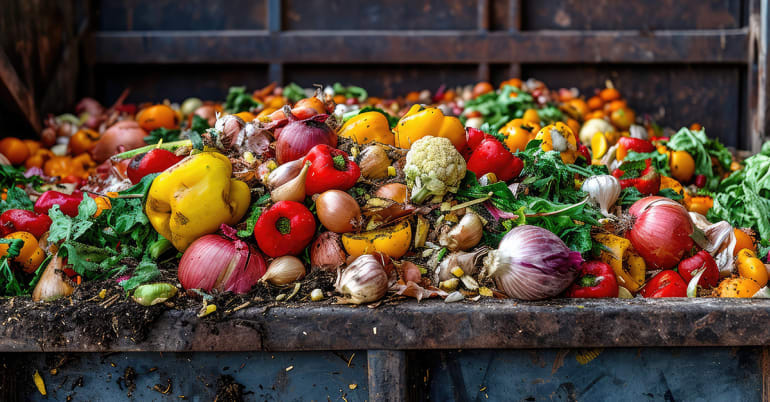Food waste in Asia-Pacific (APAC) has reached crisis levels, prompting action from the food industry and a redrawing of regulations. However, more data are needed to build on the work already undertaken, to provide efficient and sustainable solutions at scale.
According to the United Nations Environment Programme’s (UNEP) Food Waste Index 20241, 19% of food available to consumers globally is wasted at the retail, food service and household levels; the UNEP also estimates that food waste accounts for 8-10% of global greenhouse gas emissions annually.
APAC is responsible for as much as 50% of this food waste2. Of this, India produces 78.2 million tonnes of food waste annually3, China 35 million tonnes4 and Indonesia around 21 million tonnes5. The data, however, are patchy and incomplete, and do not tell the whole story.
The UN aims to halve global food waste by 20306, and countries in APAC are stepping up to play their part.
Find out more about Asia’s sustainable food agenda.
APAC steps up
China, where food makes up about 50% of municipal waste, has implemented an anti-food waste law to curb excessive consumption7, and provincial governments have started to disclose progress on reducing food waste. Additionally, two standards for reducing waste from retailers, e-commerce, restaurants and hotels, were published in 2023 and early 2024 by food-related industry associations8.
India’s Union Budget for 2024-25 focussed on increasing food processing, treatment and testing facilities, offering support to micro, small and medium-sized enterprises, and fostering innovation and entrepreneurship9. Efforts are also underway to identify data-driven solutions across the retail, hotel, restaurant, and catering segments in Mumbai and Pune, aiming to map food waste patterns and propose actionable recommendations to minimise losses10.
The Japanese government has launched a number of initiatives to raise awareness over food waste, including an Act in 2019 to prevent unspoiled food from going to waste11. From 2008 to 2020, Japanese food waste was cut by 31% on a per capita basis, falling as much as 35% in the food service sector, and 29% in households12.
South Korea implemented stringent rules around 20 years ago, and now recycles 98% of its food waste13: it has banned food waste from landfills and requires households to separate food from other waste. Food waste can be recycled by being composted and reused to fertilise soil, or by being broken down and used as biogas14.
Such government support could spark (and dovetail with) technological innovation and on-the-ground initiatives to provide vital information on food waste levels and trends.
At Lombard Odier, we believe that new forms of logistics and delivery will reduce food loss and waste
Innovation and collaboration are key
At Lombard Odier, we believe that new forms of logistics and delivery will reduce food loss and waste. With the food waste management market size forecast to increase by USD 9.13 billion between 2023 and 2028, at a compound annual growth rate (CAGR) of 4.25%15, governments must make more demands of the food industry when it comes to accountability and data gathering, as well as sharing information themselves. This should become more straightforward as technology advances and becomes more embedded in our food systems, providing an increasingly sophisticated feedback loop of information from which better decisions can be made on government policy, waste solutions and investment.
Innovations in logistics systems, powered by new software and the sharing of data between operators, could enable a better use of space in distribution centres and warehouses, and minimise empty runs (where a freight vehicle makes a journey without carrying goods).
On-the-ground solutions in APAC include repurposing food waste, such as vegetable peel and eggshells, as fertiliser; redistributing excess food through nonprofit partnerships and online services16; setting up on-site composters for food waste treatment; and even using maggots17 and black soldier fly larvae18 to break down waste. Meanwhile, food waste is also being turned into biogas19; and some APAC hotels are adopting AI-driven kitchens that monitor their waste20. A number of companies have also signed up to the UN Sustainable Development Goals’ (SDGs) target 12.3, and publicly reported significant reductions in food loss and waste21.
However, most companies do not currently report their food waste figures. For example, when assessing 350 of the world’s most prominent food and agriculture companies, the World Benchmarking Alliance found that only around 15% reported their food loss and waste data publicly22.
As the APAC population continues to grow, and the environmental imperative requires that more food is produced using less land, food waste is becoming an ever more urgent issue. Now is the time for governments and companies to step up.
Delve into the palm oil industry’s journey as it transitions towards greater sustainability.


